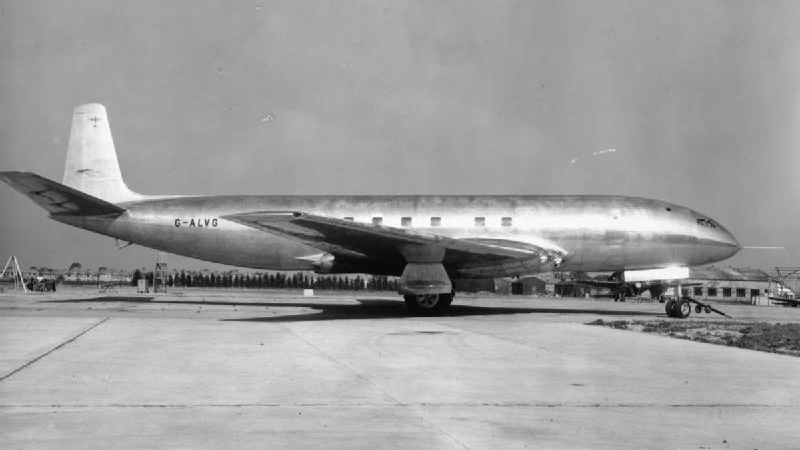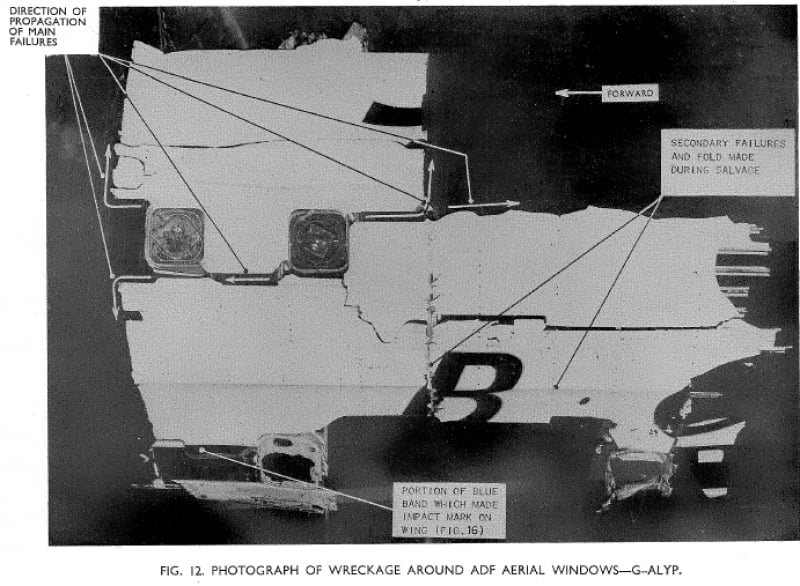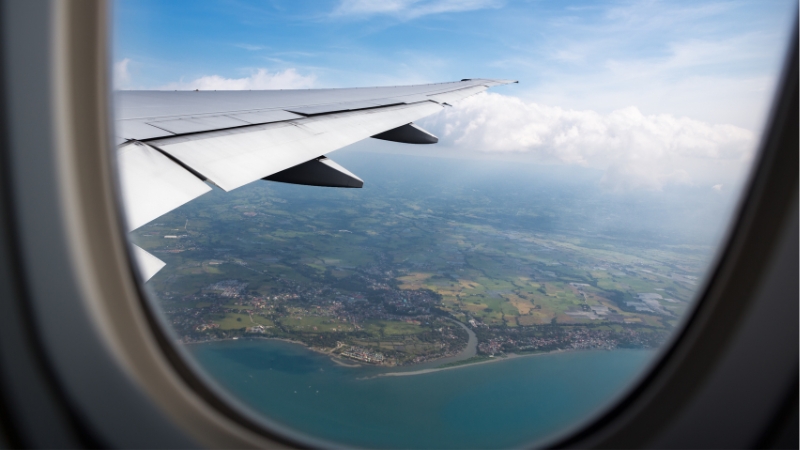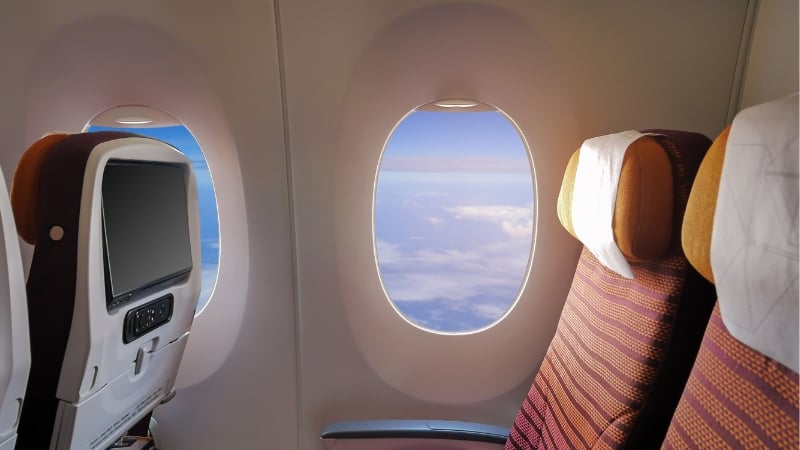Okay, so you’re on the airplane, all set for your next adventure. Glancing at your ticket, you realise – SLAY! YOU GOT THE WINDOW SEAT! You settle into your spot and look out the window, ready to soak in those stunning views from above. But I bet you’ve never stopped to think about the shape of the window, right? Well, if you do take a moment to notice, you’ll see that they’re those oh-so-distinctive oval shapes.
They’re not quite round, not quite rectangular, but somewhere in between, like the perfect little travel snack-sized window. Well, as with everything in aviation, it’s not just a quirky aesthetic choice to make planes look more stylish. Oh no – There’s a fascinating reason behind it. And it all comes down to physics, engineering, and, you guessed it, a few really disastrous crashes back in the day.
Also read: Qantas’s World’s Longest Flight to Connect Major Cities in 2026
The Jet Age Gets Rocky

Image credit: UK Government Artistic Works | Public Domain
Picture it: The 1950s, the dawn of the Jet Age, and we’re all excited about flying higher and faster than ever before. Enter the De Havilland Comet, the world’s very first commercial jet airliner. Launched in 1951, it promised to revolutionise air travel. But, plot twist! It was also a bit of a flying disaster. A series of midair catastrophes saw these planes breaking apart in flight, and it wasn’t long before people started to wonder: What in God’s name went wrong?
Spoiler alert: It was the windows. Yes, the windows.
The Sharp-Corner Problem
So, what’s the deal with windows being square or rectangular in the first place? We’ve all seen square windows before, right? They look totally fine in homes or offices, so why not in a plane? Well, that’s where the genius of aircraft engineers comes in, or rather, didn’t come in. You see, those sharp corners in rectangular windows were not doing the metal structure any favours.
Mick Oakey, the managing editor of The Aviation Historian, explains that those sharp corners are like the ultimate stress magnets. Think of them as the place where all the bending, twisting, and stretching forces decide to have a little party. And guess who gets to clean up the mess? Yep, cracks. The structure weakens, and boom! Before anyone knew what was happening, planes were coming apart mid-flight.
Pressurisation Woes

Image credit: HM Stationery Office 1955 via Wikimedia Commons
It gets worse – Well, more complicated, I guess. As any seasoned traveller knows, cabin pressurisation is a thing. Planes are pressurised during takeoff, cruising, and landing. That means there’s a constant pressure build-up and release on the aircraft’s body. This constant cycle of stress would make the metal of those planes start to break down over time, particularly around those sharp corners. The Comet was flying higher and faster than any jet at the time, which meant it encountered the effects of metal fatigue way before anyone even understood what that was. Yikes.
Enter the Round Windows

Image credit: LuckyBusiness via Getty Images
So, what’s an engineer to do when faced with this sudden, mid-air crisis? Change the design, of course! And thankfully, that’s exactly what happened. After some serious investigation, the aviation world quickly realised that rounded windows were the way forward. The curves of the window meant the stress from cabin pressurisation could be distributed more evenly across the plane. No more stress points begging for cracks to form.
Now, we all know that windows add weight to a plane – glass and frames are not exactly light as air – but rounded windows are the sweet spot. They’re light enough, safe enough, and let’s face it, they also give us that perfect view out to the skies, so we can pretend we’re in a music video every time we fly (Don’t lie, we all do it).
Small Tweaks, Big Impact

Image credit: Wattanaphob Kappa via Canva Pro
Over time, engineers fine-tuned the design. Those rounded windows weren’t just round. They were slightly squashed and a bit deeper than they were wide. That made it easier to squeeze a bunch of windows into the fuselage while still maintaining that perfectly engineered safety. Today’s windows are basically the descendants of those first rounded designs, and they’ve stuck around for good reason.
Now, here’s where it gets interesting (and a bit quirky): While most airlines adopted the oval window design, one company went a little rogue. The French Sud Aviation Caravelle planes from the late 1950s sported round-cornered triangular windows. Bold choice, right? But hey, at least they tried to be different before eventually following the crowd.
Thank You, Round Windows!
So, the next time you settle into your seat, get comfy, and look out of that perfect oval window, just know that it’s not a coincidence. Those windows are the result of years of engineering refinement, a tragic history of crashes, and a commitment to keeping us safe while we soar through the skies. They’re not just there for the view. They’re there because, in the world of aviation, every detail matters.
Also read: Flying Naked: The Travel Trend You Didn’t Know You Needed (or Wanted)





